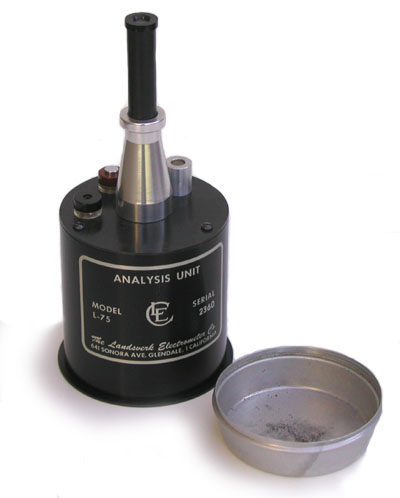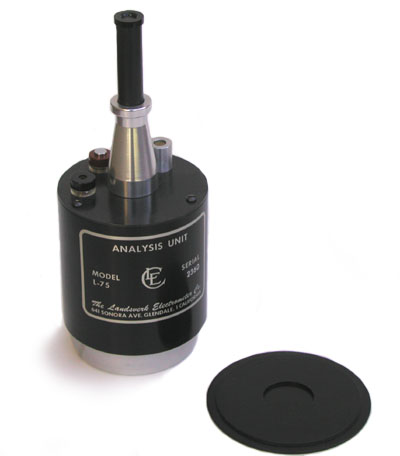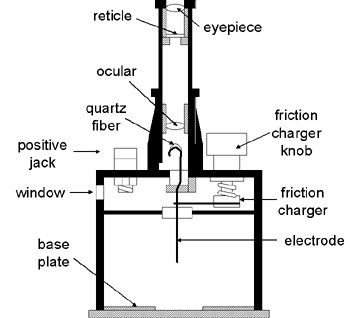Landsverk Model L-75 Analysis Unit


Manufactured by the Landsverk Electrometer Company (ca. 1953-1960) and designed for the analysis of alpha, beta, and gamma radiation from a wide variety of samples, e.g., water, food, filters etc.
The L-75 unit shown here came as part of the L-75KA analysis kit which means that this was probably produced after 1953. The L-75 itself was first manufactured around 1950. The black bakelite chamber is open on the bottom so that it can be used to analyze the alpha, beta, or gamma activity of a variety of samples, e.g., soil, water, food, filters. The L-75KA kit comes with aluminum dishes and planchets to hold the samples and aluminum absorbers for distinguishing alpha and beta activities. The original L-75 came in three versions: L-75A (chamber open at bottom), L-75B (thin window over bottom of the chamber) and L-75C (closed thick-walled chamber). Around 1960 or so, the L-75D was introduced. The latter used an internal transistorized charger powered by batteries.

It is actually a modified version of a Lauritsen electroscope wherein the sensing element (a quartz fiber) is connected to an electrode that projects down into a 200 cc cylindrical ion chamber on the bottom of the unit. The chamber is three inches in diameter and the entire unit is eight inches high.
To operate, the rate of drift of the fiber across the scale, as viewed through the eyepiece, is determined with a stopwatch or timer. In general, a background rate of drift would be determined and then subtracted from the drift rate determined for the sample.
The 145 volts or so required to zero the fiber is generated by the friction charger knob on top of the unit. Since the capacitance of the device is 2.7 picofarads and a drop of 35 volts produces a full scale (100 division) deflection, a collected charge of approximately 95 picocoulombs is required for a full-scale discharge (Q = V C). With a 300 cc chamber volume, this roughly equates to an exposure of 1 mR.
Information about the Model L-75 unit can be obtained in Nucleonics May 1951 p 102, Nucleonics July 1951 p 95, the AEC Radiation Instrument Catalog, page date June 24, 1950; and the AEC Radiation Measuring Instruments Catalog, RIB-8 (supplement 2) July 1, 1954. Information about the L-75KA kit can be obtained in Nucleonics August 1953 p 72 and the AEC Radiation Measuring Instruments, RIB-8 (supplement 2) July 1, 1954;
